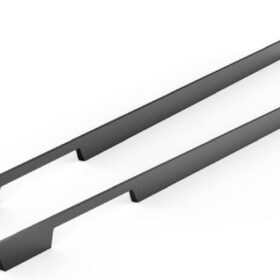The Role of Kitchen Furniture Handles in Eco-Friendly Designs
In today’s environmentally conscious era, sustainable design principles have found their way into every aspect of our lives, including our kitchen interiors. Kitchen furniture handles, though seemingly insignificant, play a crucial role in contributing to the eco-friendliness of these spaces. This article delves into the multifaceted ways in which kitchen furniture handles embrace sustainability, inspiring homeowners to make informed choices that align with their eco-conscious values.
Sustainable Materials
Kitchen furniture handles are available in a wide range of materials, from traditional metals to innovative eco-friendly options. Sustainable materials such as bamboo, reclaimed wood, and recycled metals offer a plethora of benefits for the environment. Bamboo, for instance, is a rapidly renewable resource that grows without the need for pesticides or herbicides, reducing its environmental impact. Reclaimed wood, on the other hand, repurposes discarded materials, diverting them from landfills and conserving valuable resources. Recycled metals, including aluminum and stainless steel, minimize waste and conserve natural resources by reusing existing materials.
Energy Efficiency
The production process of kitchen furniture handles can also contribute to energy efficiency. Handles made from sustainable materials often require less energy to produce compared to those crafted from non-renewable resources. For example, bamboo handles require significantly less energy to grow and harvest than metal handles, which are typically extracted from mines and smelted in energy-intensive processes. Energy-efficient production methods reduce greenhouse gas emissions and conserve natural resources.
Durability and Longevity
Durability and longevity are essential qualities for eco-friendly kitchen furniture handles. Well-crafted handles made from sustainable materials are designed to withstand daily use and the test of time, minimizing the need for replacements. Durable handles reduce waste and conserve resources associated with frequent replacements, thereby contributing to a more sustainable kitchen environment.
Aesthetics and Sustainability
Eco-friendly kitchen furniture handles do not compromise on aesthetics. Sustainable materials like bamboo, reclaimed wood, and recycled metals can lend a unique charm to kitchen interiors. These materials often showcase natural grains, textures, and imperfections that add character and warmth to the space. Designers have embraced the beauty of sustainable materials, creating handles that are not only eco-friendly but also visually appealing, complementing various kitchen styles from classic to contemporary.
Conclusion
Kitchen furniture handles are an integral part of eco-friendly kitchen designs, contributing to sustainability in several ways. From sustainable materials and energy-efficient production to durability and aesthetics, these seemingly small components play a significant role in reducing environmental impact. By opting for eco-friendly handles, homeowners can make a positive contribution to the planet while enhancing the beauty and functionality of their kitchens. As we continue to strive for a greener future, embracing sustainable choices in every aspect of our lives, including our kitchen interiors, becomes increasingly important.
-
2024-11-29Top Trends in Modern Kitchen Cabinet Pulls for 2024
-
2024-11-28The Ultimate Guide to Modern Kitchen Cabinet Pulls- Materials, Styles, and Tips
-
2024-11-27Elevate Your Kitchen Design with These Must-Have Modern Cabinet Pulls
-
2024-11-26Sleek and Stylish- The Best Modern Kitchen Cabinet Pulls for a Contemporary Look










